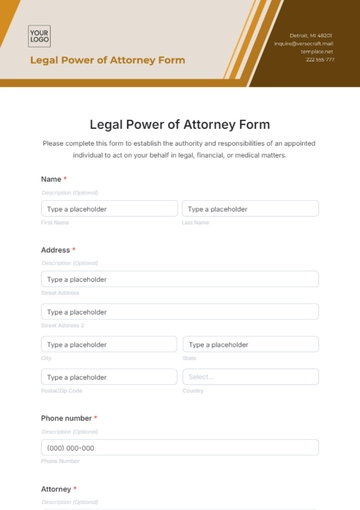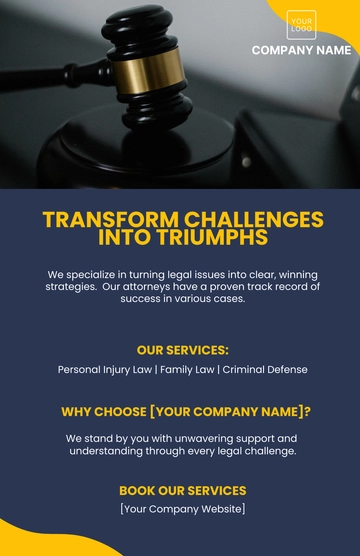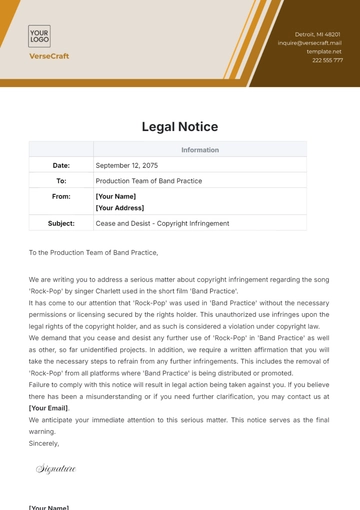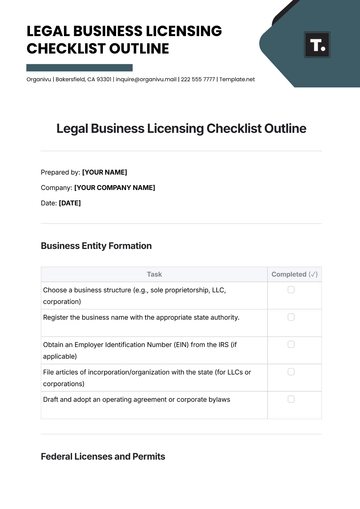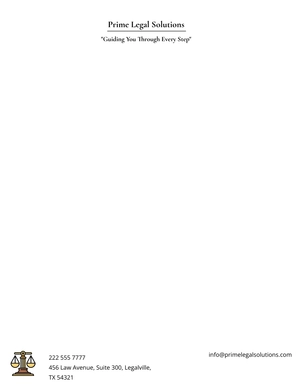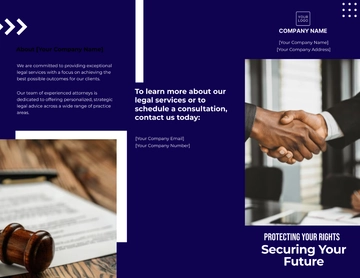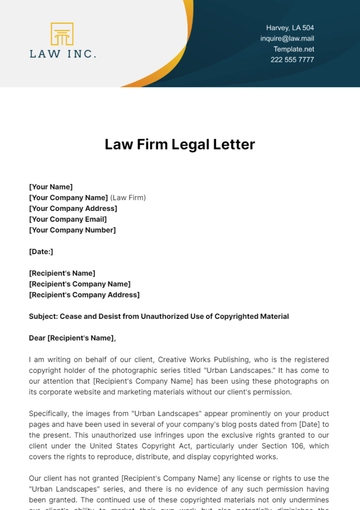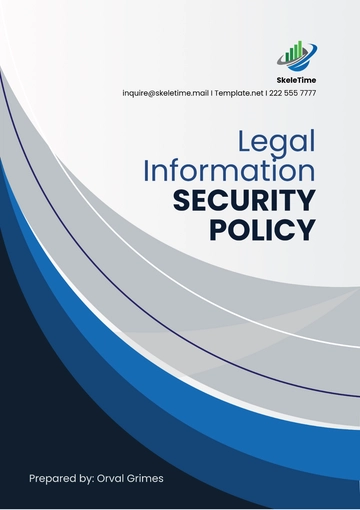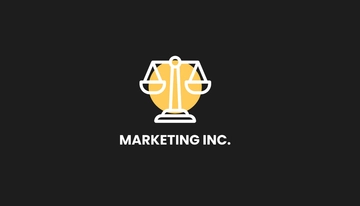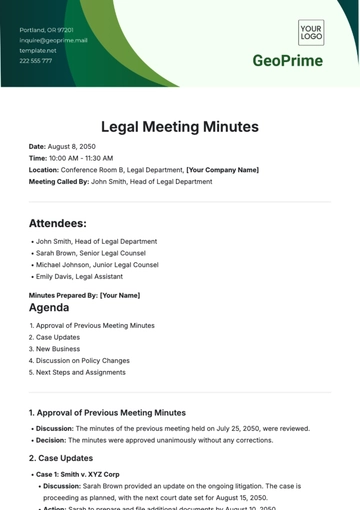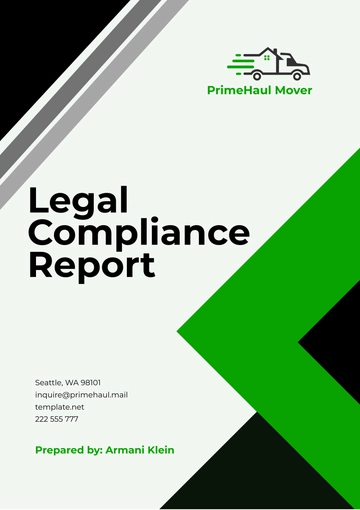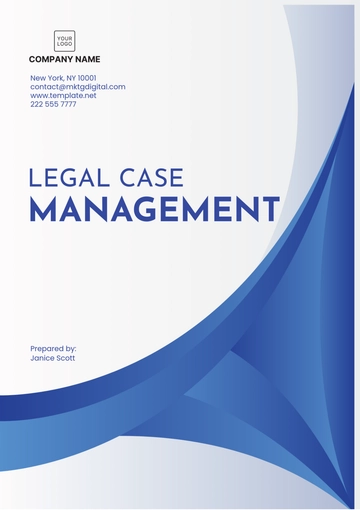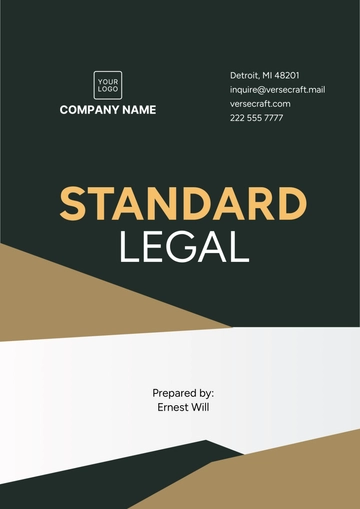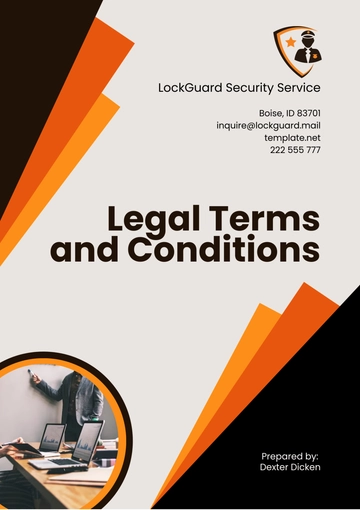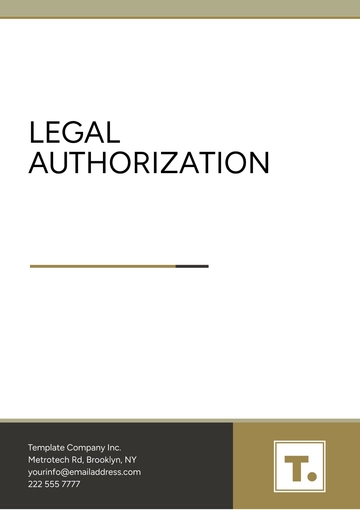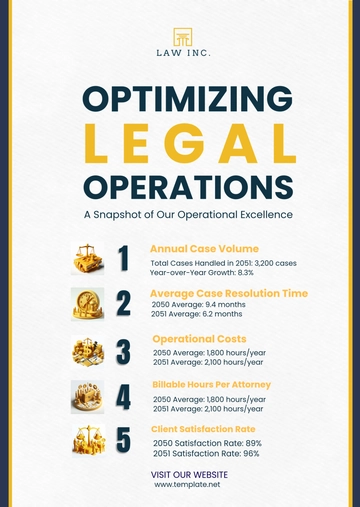Free Law Firm Risk Management Strategy
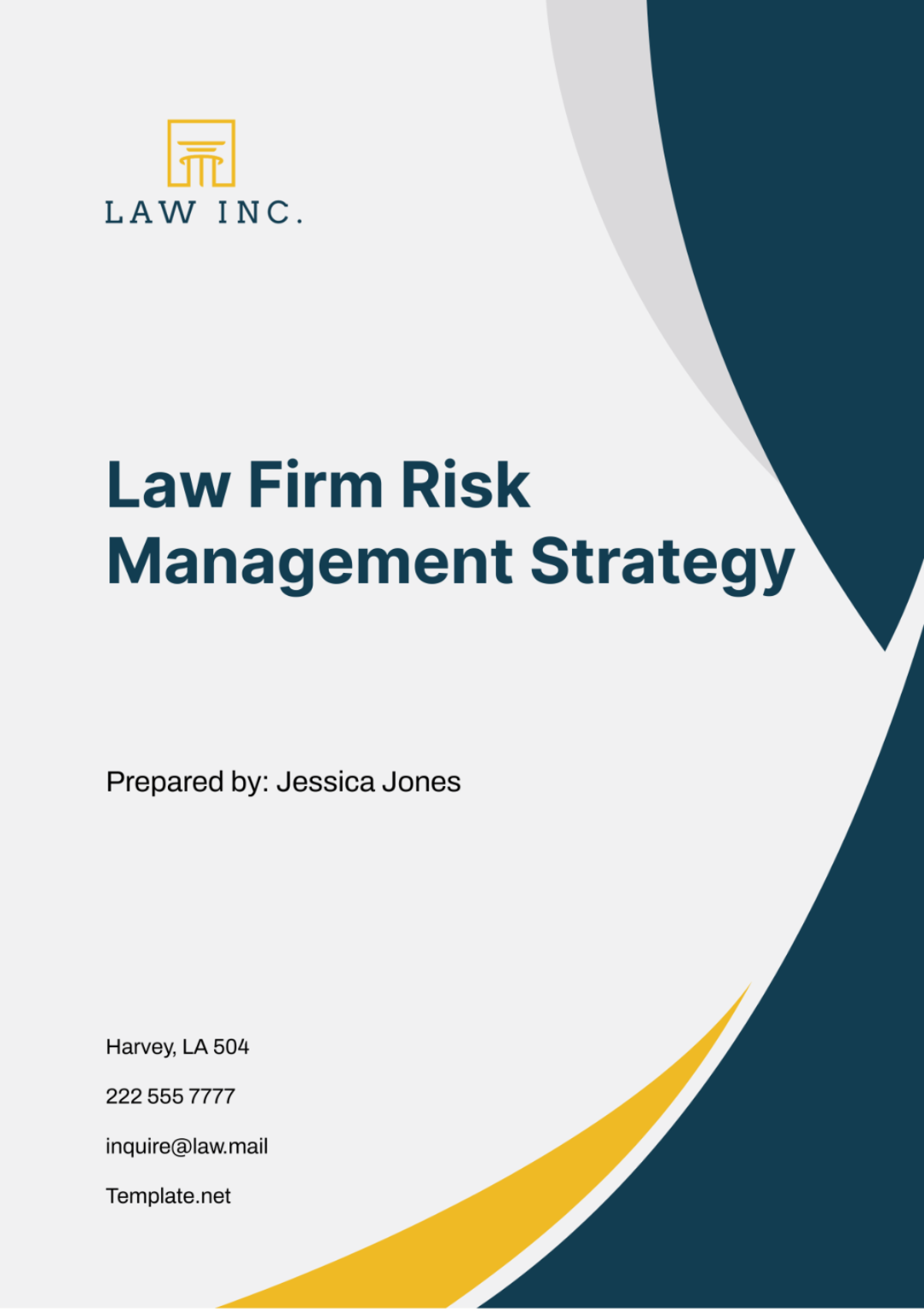
1. Overview of Risk Management Strategy
At [Your Company Name], our Risk Management Strategy is integral to maintaining the sustainability and ethical integrity of our operations. This strategy encompasses a structured approach to identifying, assessing, mitigating, and monitoring the various risks associated with our legal services. Our primary goal is to ensure that our firm’s operations not only align with legal standards but also protect our reputation and financial stability. By integrating risk management with our strategic objectives, we aim to enhance decision-making processes and operational efficiency, thus securing long-term success.
2. Identification of Key Risks
Effective risk management begins with a comprehensive identification of potential risks. At [Your Company Name], we categorize risks into four main areas: professional, operational, financial, and technological. Below is a table that outlines these categories with examples of potential risks:
Risk Category | Examples of Specific Risks |
|---|---|
Professional | Malpractice, ethical violations |
Operational | Business interruption, loss of key personnel |
Financial | Fraud, credit risks |
Technological | Cyber-attacks, data breaches |
This categorization helps in focusing our analysis and tailoring our mitigation strategies appropriately. For instance, the rise in cyber-attacks across the industry highlights the need for enhanced data security measures, prompting a proactive response from our IT department.
3. Risk Assessment and Analysis
Following risk identification, [Your Company Name] conducts a thorough analysis using both qualitative and quantitative methods to determine the likelihood and potential impact of each risk. We employ a standardized risk rating system to prioritize management focus effectively. The following table provides an example of how risks are rated and prioritized:
Risk | Likelihood | Impact | Rating |
|---|---|---|---|
Malpractice | Medium | High | High |
Data Breaches | High | High | High |
Business Interruption | Low | High | Medium |
Fraud | Low | Medium | Medium |
This system allows us to allocate resources efficiently and focus our efforts where they are needed most, ensuring a proactive stance in managing potential threats.
4. Development of Mitigation Strategies
For each identified and assessed risk, [Your Company Name] develops specific mitigation strategies that include both preventative measures and contingency plans. These strategies are formulated with input from relevant department heads to ensure they are comprehensive and applicable across all areas of our operations. For instance:
Professional Risks: We implement strict continuing legal education (CLE) requirements and regular ethical training to reduce the risk of malpractice and ethical violations.
Operational Risks: Strategies include succession planning and business continuity plans to address potential business interruptions or loss of key personnel.
Financial Risks: We enhance internal controls and conduct regular financial audits to mitigate risks related to fraud and credit.
Technological Risks: To combat cyber threats, we invest in state-of-the-art cybersecurity measures and regular IT security training for all staff.
Each mitigation strategy is tailored to the specifics of the risk involved, ensuring that our responses are effective and appropriate. Regular updates and revisions to these strategies are made in response to new threats and changes in the legal landscape, allowing [Your Company Name] to remain resilient and responsive in a dynamic environment.
5. Implementation of Risk Management Protocols
[Your Company Name] recognizes that the successful implementation of risk management strategies is contingent upon the robust development and enforcement of clear policies and procedures. We facilitate comprehensive training sessions to ensure that all staff members understand these protocols and their roles in upholding them. This includes familiarizing them with our risk response procedures and the importance of timely reporting of potential risks. Regular audits are integral to our strategy, ensuring strict compliance and identifying areas for improvement. For instance, our quarterly audits allow us to assess the effectiveness of our cybersecurity measures and adjust them based on evolving threats and technological advancements.
6. Monitoring and Reporting
To gauge the effectiveness of our risk management strategies, [Your Company Name] employs a systematic approach to monitoring and reporting, utilizing well-defined Key Performance Indicators (KPIs) and risk metrics. These indicators include:
Number of compliance breaches reported
Response times to emerging risks
Incident resolution times
Employee training completion rates
For example, a KPI might be to maintain a risk resolution time of under 48 hours for operational risks. Regular reports are generated based on these KPIs, providing insights into the firm’s risk posture and the effectiveness of the implemented strategies. These reports are reviewed monthly by department heads and quarterly by the board, ensuring that all levels of the organization are informed and engaged in the risk management process.
7. Technological Tools for Risk Management
Leveraging advanced technology is key to enhancing the efficiency and effectiveness of [Your Company Name]'s risk management practices. We utilize sophisticated document management systems to ensure secure and organized storage of sensitive information, reducing the risk of data breaches. Compliance tracking tools are employed to monitor adherence to legal and regulatory standards, providing real-time alerts when potential non-compliance issues arise. Additionally, we invest in real-time monitoring software that uses artificial intelligence to predict potential risk scenarios based on patterns and trends. This proactive approach not only mitigates risks but also enhances our ability to respond swiftly to unforeseen challenges.
8. Training and Development
At [Your Company Name], we believe that continual training and development are critical to maintaining an effective risk management framework, especially in the dynamic field of law where regulations and risks constantly evolve. Our training programs are comprehensive, covering ethical practices, compliance requirements, and operational risk management. We also include specific modules on new technologies adopted by the firm, ensuring that all employees are proficient in using the tools that support our risk management strategies.
To foster a culture of continuous learning and improvement, more experienced staff mentor newer employees, sharing insights and experiences that enrich the firm’s knowledge base. For example, bi-annual workshops on the latest regulatory changes in data protection laws ensure that our legal teams are always up-to-date, reducing the risk of compliance violations.
Through the strategic implementation of robust monitoring systems, the use of advanced technological tools, and a commitment to ongoing training and development, [Your Company Name] ensures a comprehensive approach to managing risks. These efforts not only safeguard our operations against current risks but also prepare us to adeptly handle future challenges, securing our firm’s reputation and operational integrity in the long term.
9. Legal Compliance and Ethics
Legal compliance and maintaining ethical standards are foundational elements of [Your Company Name]'s operations. Our strategy emphasizes not just adherence to legal requirements, but also the promotion of a culture where ethical behavior is the norm. We implement robust mechanisms, such as an ethics hotline, where employees can report ethical concerns confidentially. Regular ethical audits ensure our practices align with both legal standards and our internal code of conduct. To further this agenda, we celebrate instances of outstanding ethical behavior and address misconduct with clear, pre-defined disciplinary measures. This proactive stance helps prevent potential legal issues and reinforces our firm's commitment to high ethical standards.
10. Response Plan for Risk Realization
When risks materialize, [Your Company Name] activates a pre-defined incident response plan tailored to the specific nature of the risk encountered. This plan includes:
Immediate Actions: Quick mitigation steps to limit impact, such as isolating a breached network segment in the event of a cybersecurity incident.
Communication Guidelines: Detailed procedures for internal and external communication to manage information flow and maintain transparency with clients.
Remedial Measures: Strategies to prevent future occurrences, which may involve revising existing policies or introducing new training modules.
For instance, if a data breach occurs, the response plan dictates immediate notification to affected clients and regulatory bodies, followed by an in-depth forensic investigation to identify and rectify the breach source. Swift and effective handling of such incidents minimizes damage and restores normal operations quickly, maintaining client trust and regulatory compliance.
11. Review and Continuous Improvement
The dynamic nature of risk in the legal sector requires that [Your Company Name]'s risk management strategy be adaptable and responsive. We conduct semi-annual reviews to assess the strategy's effectiveness and responsiveness to changing conditions. These reviews consider feedback from all levels of the organization, as well as analyses of recent incidents and near-misses. Adjustments are made based on this feedback, with the aim of continuously enhancing our risk management framework. For example, if new types of cyber threats are identified, our IT security policies might be updated to address these specific risks. This iterative process ensures that our strategies remain relevant and robust, providing maximum protection against emerging and evolving threats.
12. Risk Management Accountability and Governance
At [Your Company Name], clear governance structures are in place to ensure that risk management responsibilities are well-defined and accountability is maintained at all levels. Specific roles, such as a Risk Management Officer, are designated within the firm to oversee the implementation and effectiveness of risk management strategies. Regular reports are prepared for the board and the risk committee, ensuring that senior leadership is informed of risk status and management activities. These reports provide the basis for strategic decision-making, enabling informed responses to potential risks. For example, if an increase in operational risk is detected due to expanding into new markets, the board might decide to enhance resource allocation to operational controls.
Together, these measures ensure that [Your Company Name] not only responds effectively to immediate risks but also strengthens its overall risk management capabilities, aligning them with both current needs and future growth objectives. This comprehensive approach to risk management underscores our commitment to maintaining the highest standards of professionalism and ethical practice, safeguarding our firm's reputation and the trust of our clients.
- 100% Customizable, free editor
- Access 1 Million+ Templates, photo’s & graphics
- Download or share as a template
- Click and replace photos, graphics, text, backgrounds
- Resize, crop, AI write & more
- Access advanced editor
Unveil Template.net's dynamic Law Firm Risk Management Strategy Template. Tailored specifically for legal entities, it's your key to comprehensive risk mitigation. Harness its power effortlessly, as it's both editable and customizable with our AI editor tool. Crafted with precision, it ensures seamless integration into your firm's operations. Rely on Template.net for unparalleled templates that meet your every need.
